
Close reading is an important skill for students to learn. Close reading is required by the common core and important for success on standardized tests.
It is also a skill that students will use throughout their academic careers. As kids engage with more difficult texts both in literature and content areas, they will rely on close reading strategies to help them understand complex ideas.
But close reading can be a little bit confusing. It is different from other reading strategies that we often teach. And all those repeated readings can get boring. What are you supposed to do each day to help deepen student understanding?
Watch our video on close reading classroom routines:
Keep reading for more info about close reading routines.
Understanding close reading
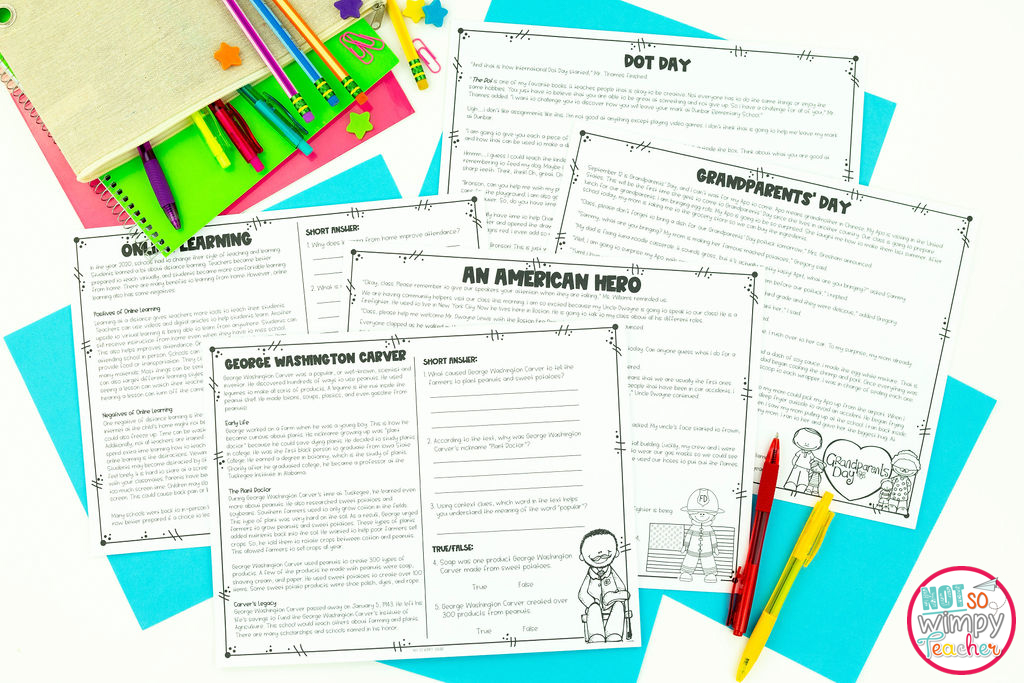
Close reading is the repeated reading and discussion of a text to deepen student comprehension. It uses reading strategies, comprehension questions, and evidence-based analysis of a text to increase understanding.
The purpose of close reading is to get students to focus on a text by examining it carefully and to dig into its meaning. Close reading is a multi-step process where the students engage with the same text over and over.
As students read and reread the text, each step leads to deeper understanding. Students initially focus on the smallest parts of a text, like words or phrases, and move on to bigger ideas like the main idea and theme.
Close reading helps kids answer these questions:
- What does the text say?
- How does it say it?
- What does this mean?
- Why is it important?
Benefits of close reading
Close reading helps students understand not just the general idea of a text, but the specific details and meaning. They learn how to go beyond the words on the page and understand an author’s tone and purpose through things like word choice, structure, and organization.
Close reading helps students become independent readers. It provides the framework and tools they need to dig into the meaning and purpose of different texts using only the text itself. This allows them to tackle more difficult texts with confidence.
Additionally, close reading develops critical thinking skills. It helps students make qualitative judgments about a text and compare different passages.
Finally, close reading has cross-curricular applications. These strategies will help students understand texts across all different subjects.
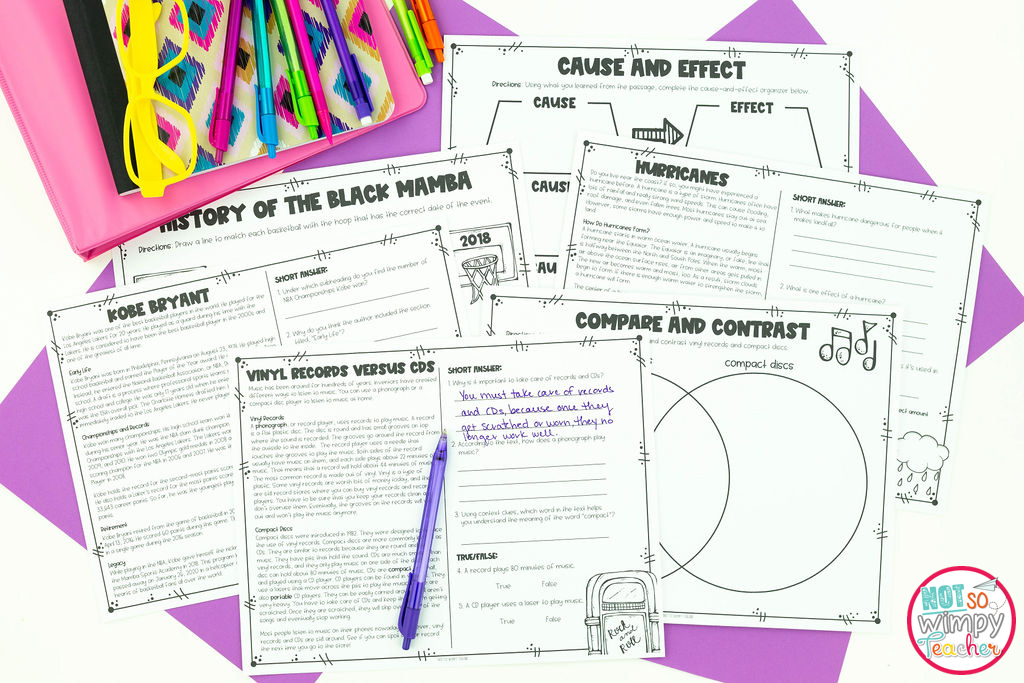
How to teach close reading
First read
Close reading is a process. Each step of the process has a different purpose. The first read is primarily to get a general understanding of the text.
Teach your students these three steps for the first read:
- Number the passages.
- Read the passage carefully.
- Think about the passage as you read.
You should model this process for students, thinking aloud as you read. Some questions you might ask yourself as you read are:
- What is the author saying here?
- What does this word mean?
- I wonder why he said that?
- What is the main idea of this passage?
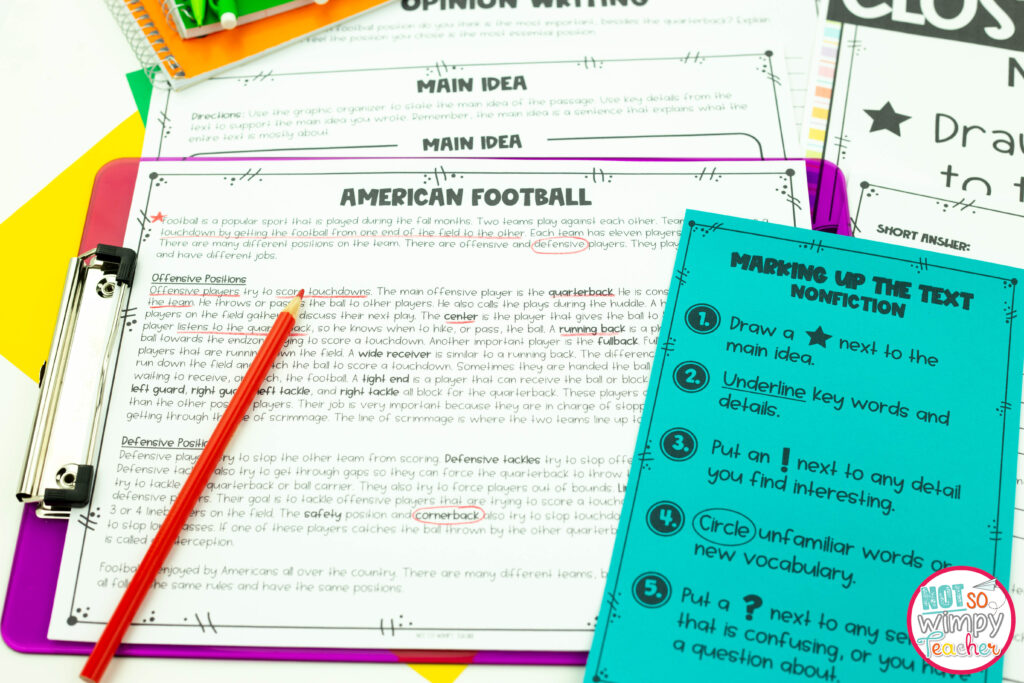
Reread and mark the text
After the first read, the next step is to read the passage a second time. During this second read you will mark up the passage. Sometimes this is called reading with a pencil.
The exact features marked will depend on whether you are reading fiction or nonfiction, but in both cases you will be looking for key elements of the text, unfamiliar words, interesting details, or parts of the text that are confusing. The act of marking up the text requires students to pay close attention to what they are reading.
Dig deeper with discussion, questions, and analysis
After the initial readings, students will continue to dig deeper into the text through comprehension questions and additional activities that require them to explore the passage in detail.
A simple close reading routine
- First Day: Read, reread, and mark up the text.
- Second Day: Reread and answer comprehension questions.
- Third Day: Complete a standards-based extension activity to deepen understanding.
- Fourth Day: Construct a written response using text evidence.
Close reading passages
Would you like some no-prep close reading passages that are fun, engaging, and easy to use? Plus, anchor charts, discussion questions, extension activities, and a daily schedule that sets forth exactly what to do?
You’re in luck! I’ve created a seasonal reading comprehension close read passages bundle for grades 3 and 4.

This bundle includes 60 ready-to-use reading passages that provide rigorous, standards-based practice of close reading skills. There are five short, student-friendly, seasonally-based reading passages for each month that are a mix of fiction and nonfiction. I even throw in poetry once in a while.
The seasonal reading passages bundle includes:
- 60 seasonally-based reading passages for students to practice close reading skills like underlining, circling, and adding symbols and notes
- Comprehension questions for each passage that require students to think deeply about the reading and find text evidence to support their answers
- Standards-based reading activities (1 for each passage) for additional practice that keeps kids engaged
- Reading response writing activities (1 for each passage) that help kids develop higher-order thinking skills and use text-evidence
- 12 teacher anchor charts – simply project onto a whiteboard or print and display in the classroom
- Printable student anchor charts (2 versions) for students to reference during close reading
- An “At a Glance” calendar that lays out your lessons for the entire month
- And more!
Students love these passages!
Seasonal and kid-friendly topics pique kids’ interest. With passages about things like snowboarding, penguins, gingerbread houses, Chinese New Year, football, scavenger hunts, and Halloween kids are excited to learn!
Just look at what Donna F. Had to say:
“My kids have used these since October and they look forward to the next reading passages as much as I do. They love them and get so excited about the content. These are a teachers’ dream.”
This fun resource will help you establish a close reading classroom routine today that you can practice all year long!
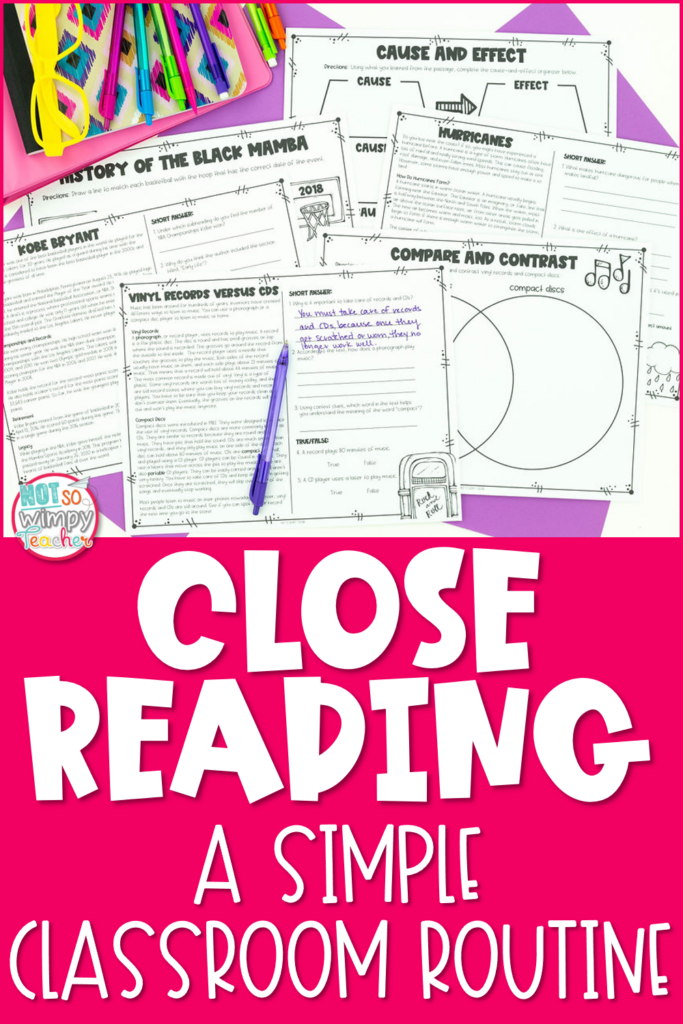
Read more about close reading strategies here.
Have a Not So Wimpy Day,


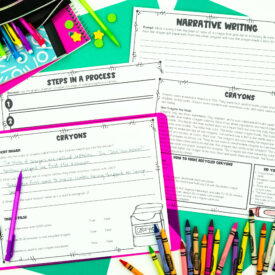
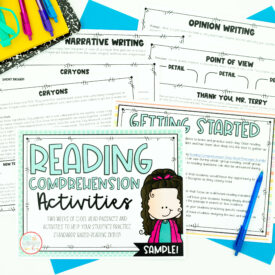
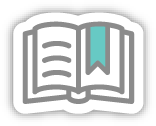
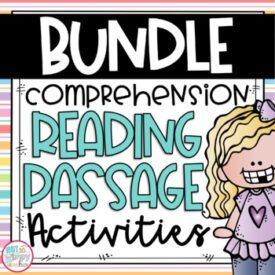

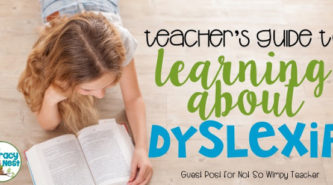
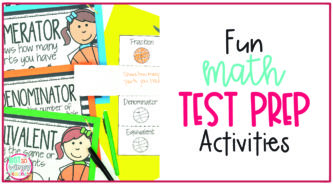












 End of Year Carnival Week for grades 2-5!
End of Year Carnival Week for grades 2-5!
Hi Jamie. I have your year long reading and writing as well. How do you recommend using this with those resources? Do you have a post with a new timetable using these resources as well? Thanks!
Hi Laura,
Great question, thanks for asking! Since our reading units are designed to supplement any curriculum you already use and do not have activities for every single day, there are several options to use them along with the close reading passages. The close reading passages could be bell work, the first 10 minutes of the reading block every day, a center, or if you do not use book clubs, they could be done in a small group.
Thank you I sure will try it with my 1 graders at their levels thank you.
I had started similar ideas using drawing for my early reader and writer kids. They would draw and label their favorite part of the book. When alls done we have a critique where the students works are presented to the class. We call it a gallery opening where all the kids in class see each other’s works, compliment them first then ask each other questions.
It’s fun to view their confidence and progression in verbalizing and using the correct verbiage when critiquing others.
I love the gallery opening idea!
I hope you will do a unit like this for 2nd grade!
Hi Suzanne!
We are currently working on other projects, but hope to create passages for second grade in the future.